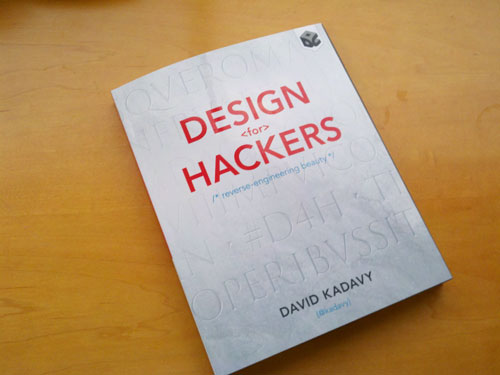Image Credit: Design for Hackers newsletter
I’m a sucker for books on design. In high school and college, I’d read as many as I could whenever I had time. Throughout the years, though, I’ve noticed less challenge and inspiration derived from these books. This is probably because I’m reaching a rate of marginal return on the subject, yet I admit there is a lot I still have yet to learn. Further expansion of growth will not be from reading design books anymore, but rather practical application and practice of the concepts.
So the past few years I’ve avoided design books or articles with beginner to intermediate content. But Design for Hackers: Reverse-Engineering Beauty by David Kadavy caught my eye. The promise of a programmatic (or better yet scientific) approach to the touchy-feely explanations of design concepts from past books excited me.
Regrettably, the book was still a level or two below the challenge I sought. There was not much new to me, although I did find the chapter on proportions to be enlightening. I appreciated the amount of scientific explanation on the design fundamentals, but just about all of it was material I’ve read somewhere else. The most entertaining part of the book for me were the examples Kadavy used to explain composition, color theory, etc. It was fun to analyze Seurat’s painting along with him.
With that said, I do think the author’s real target audience will find immense value in the book. Developers (or hackers) who want to understand the most important fundamentals of design should read this book. I have no doubt it will be the best book they can find to help them level up several steps. Even design novices will find it engaging. Design professionals, however, should probably stick to Python tutorials and your 2012 resolutions.

